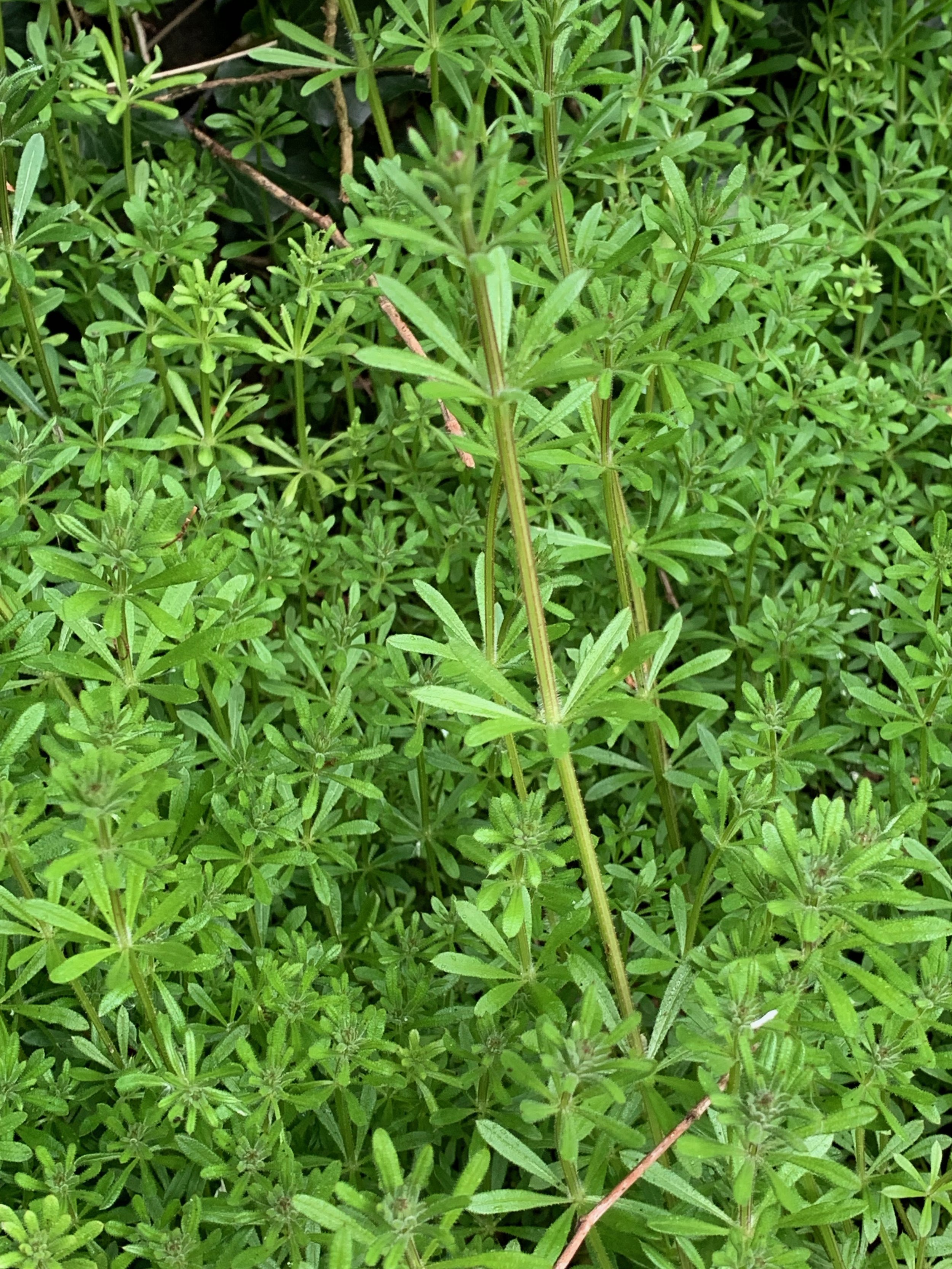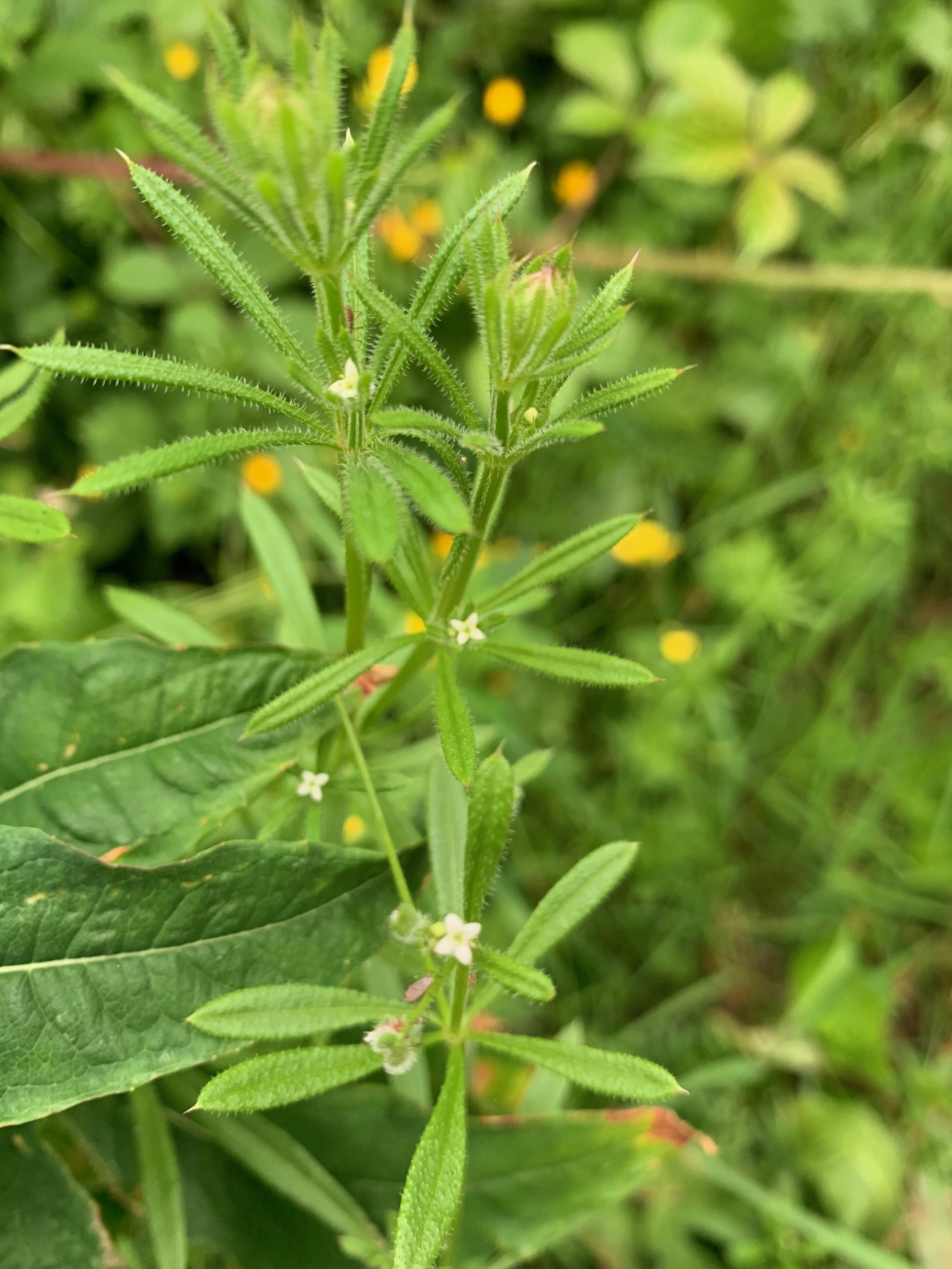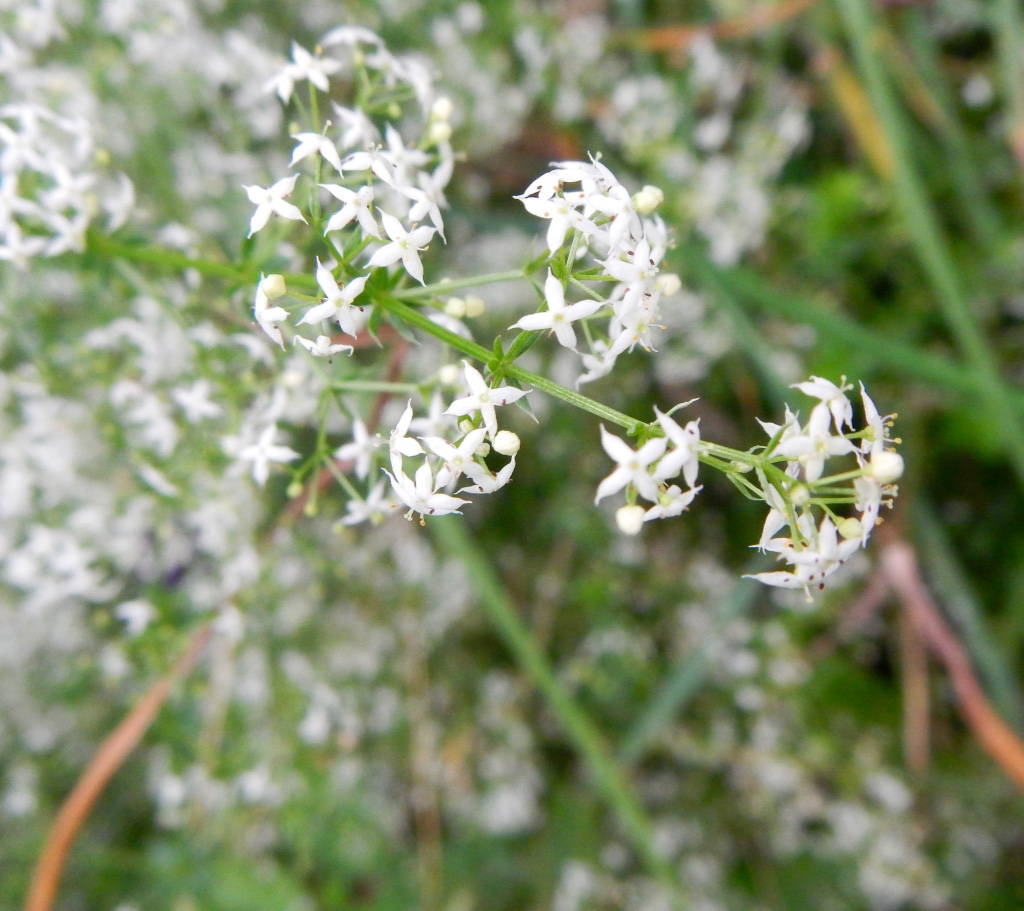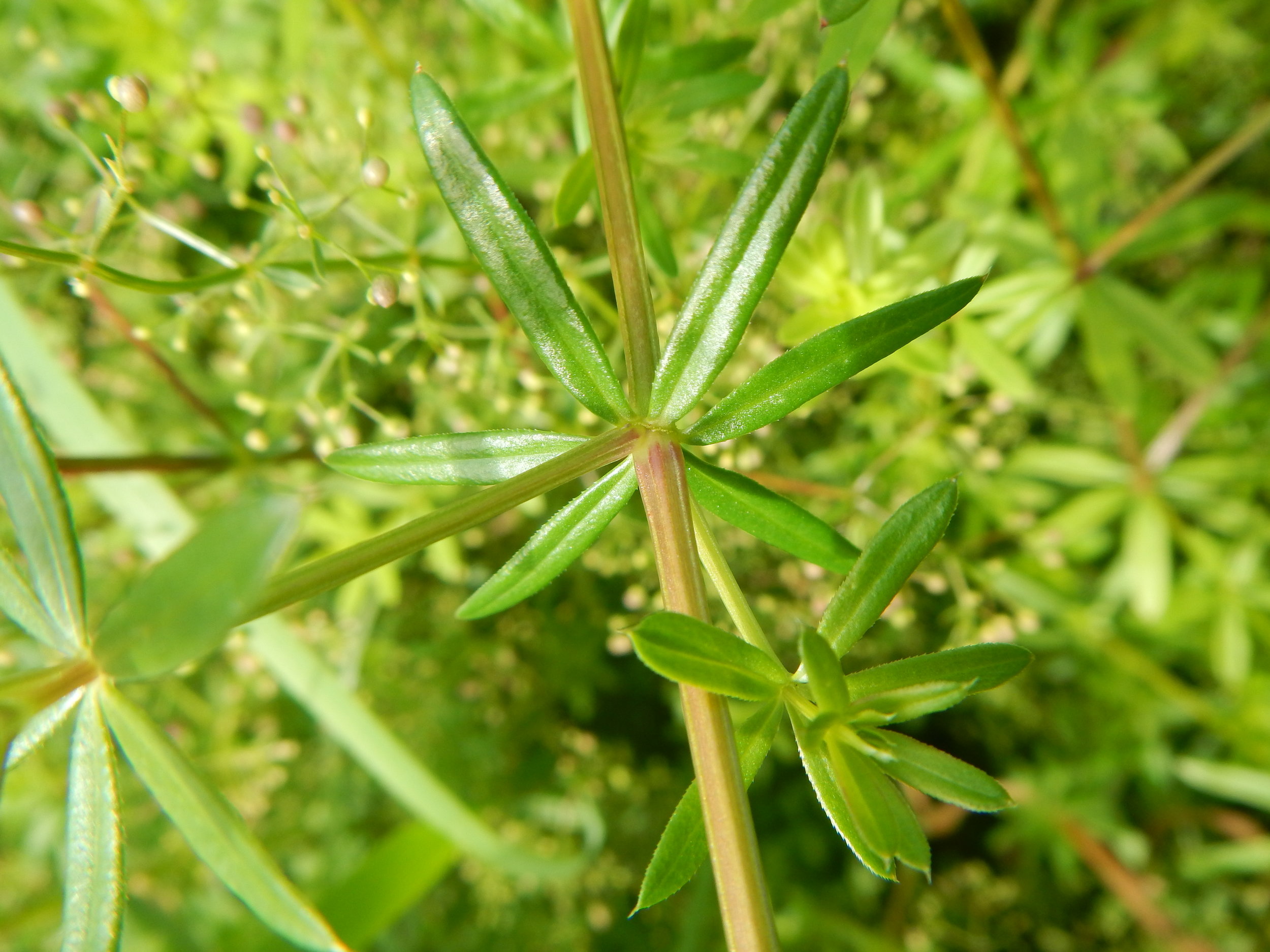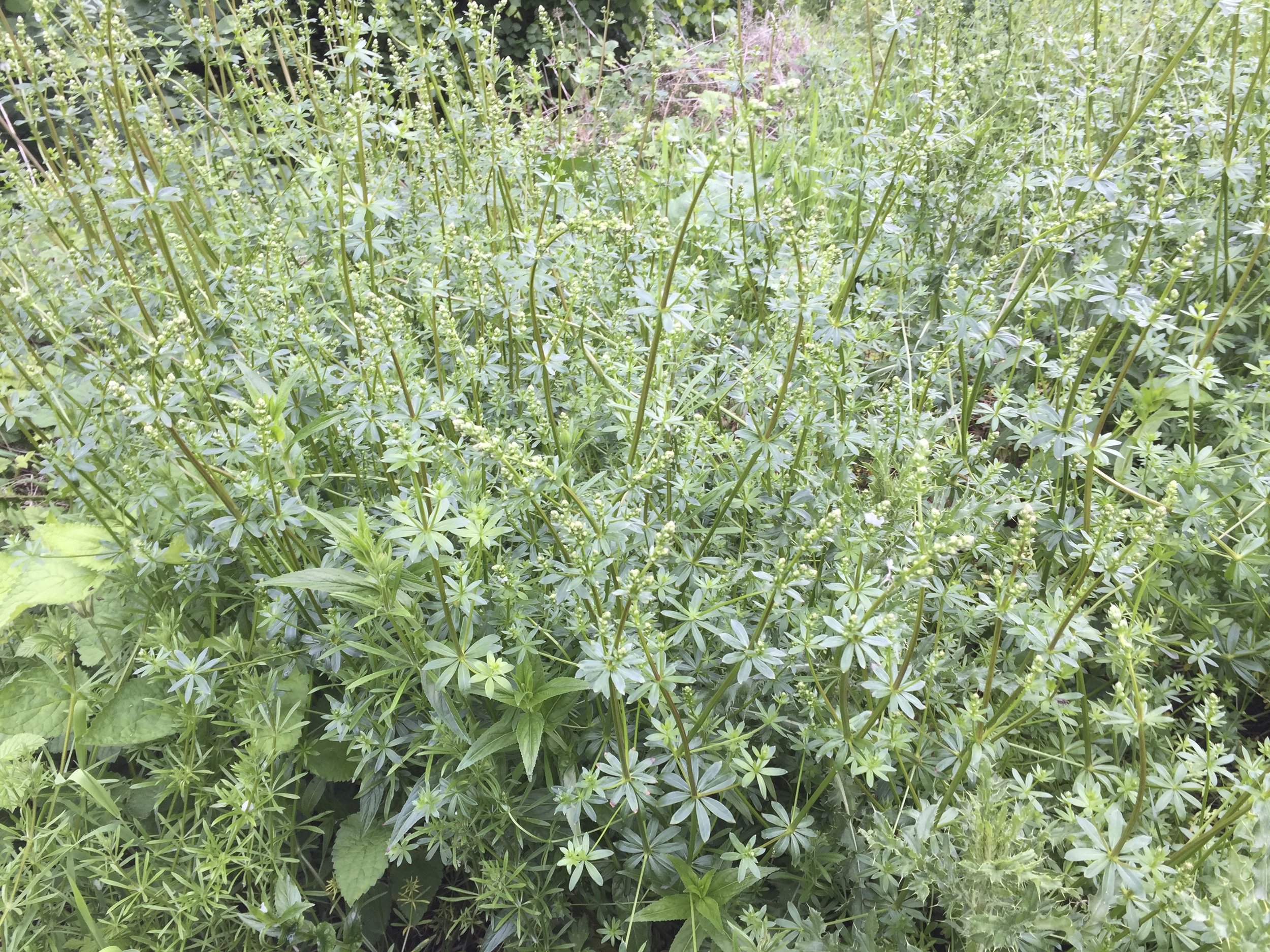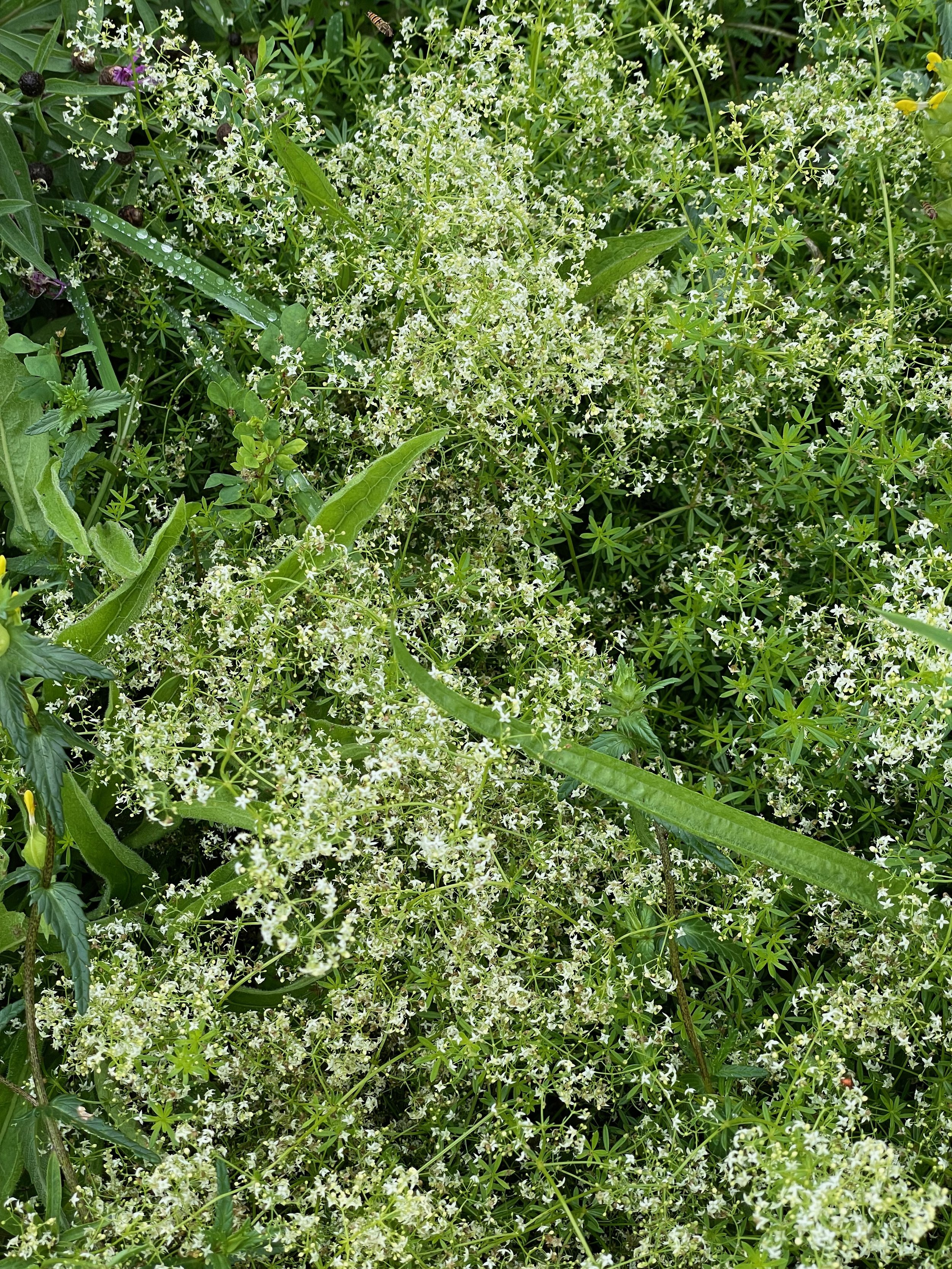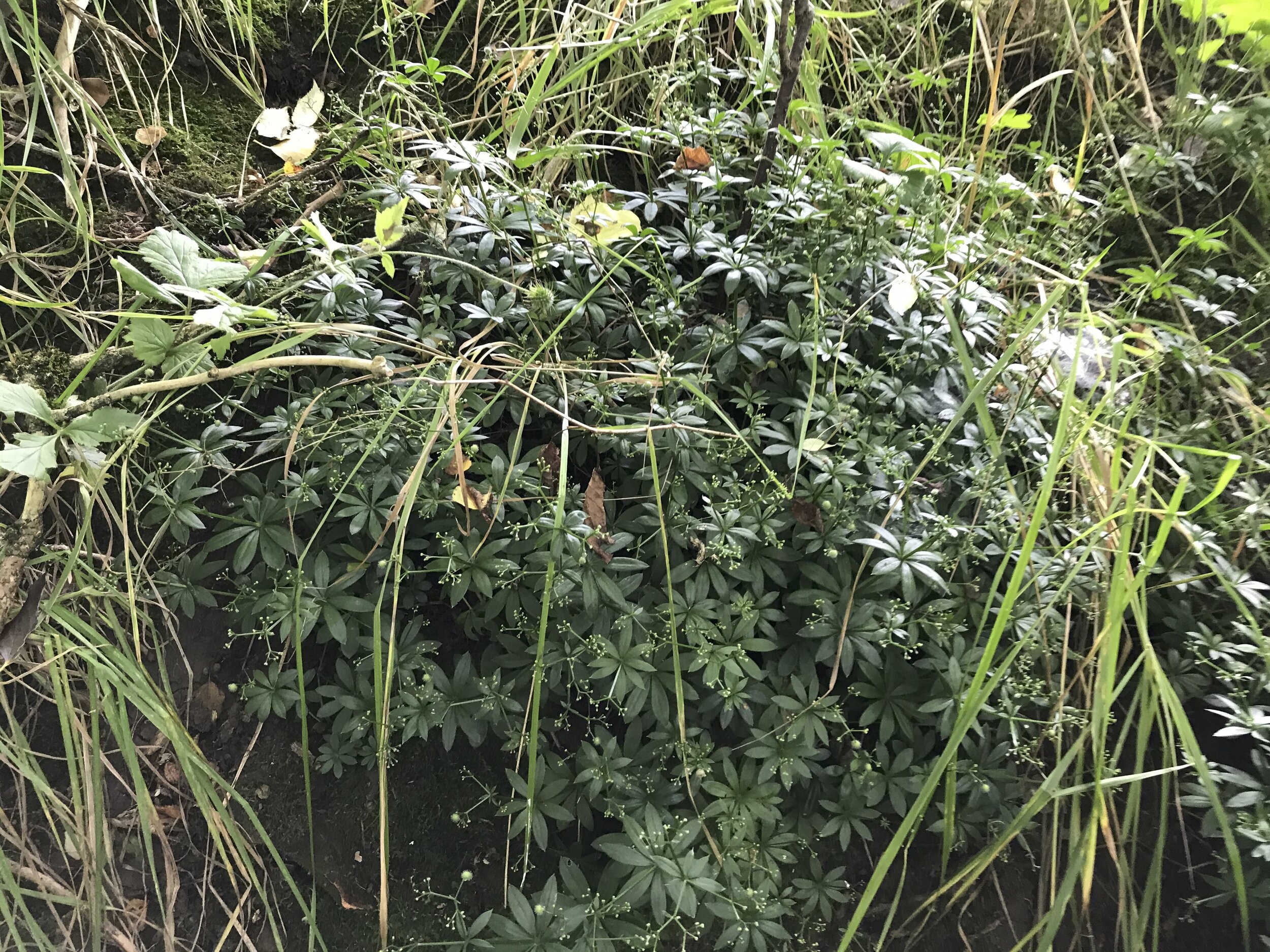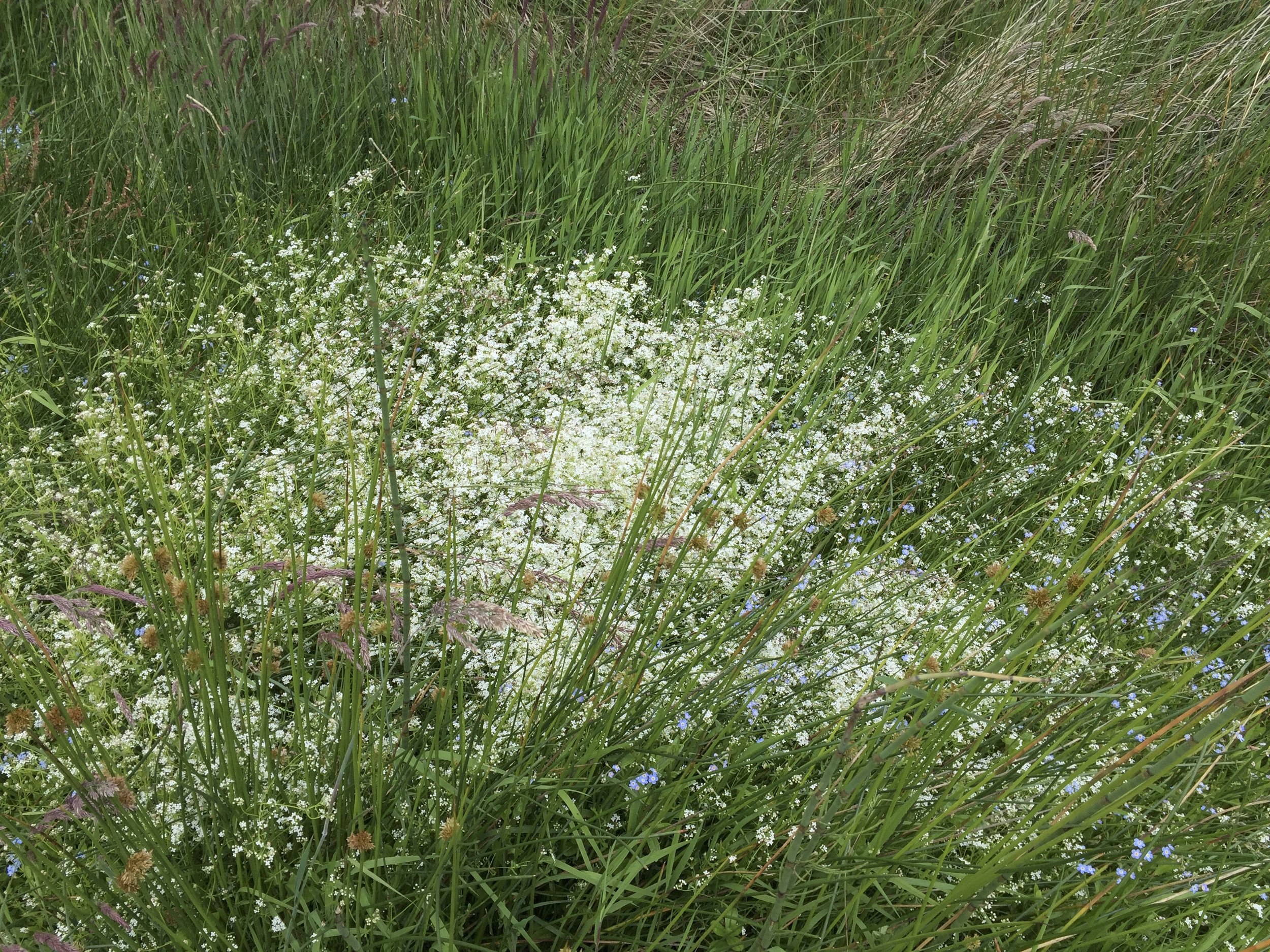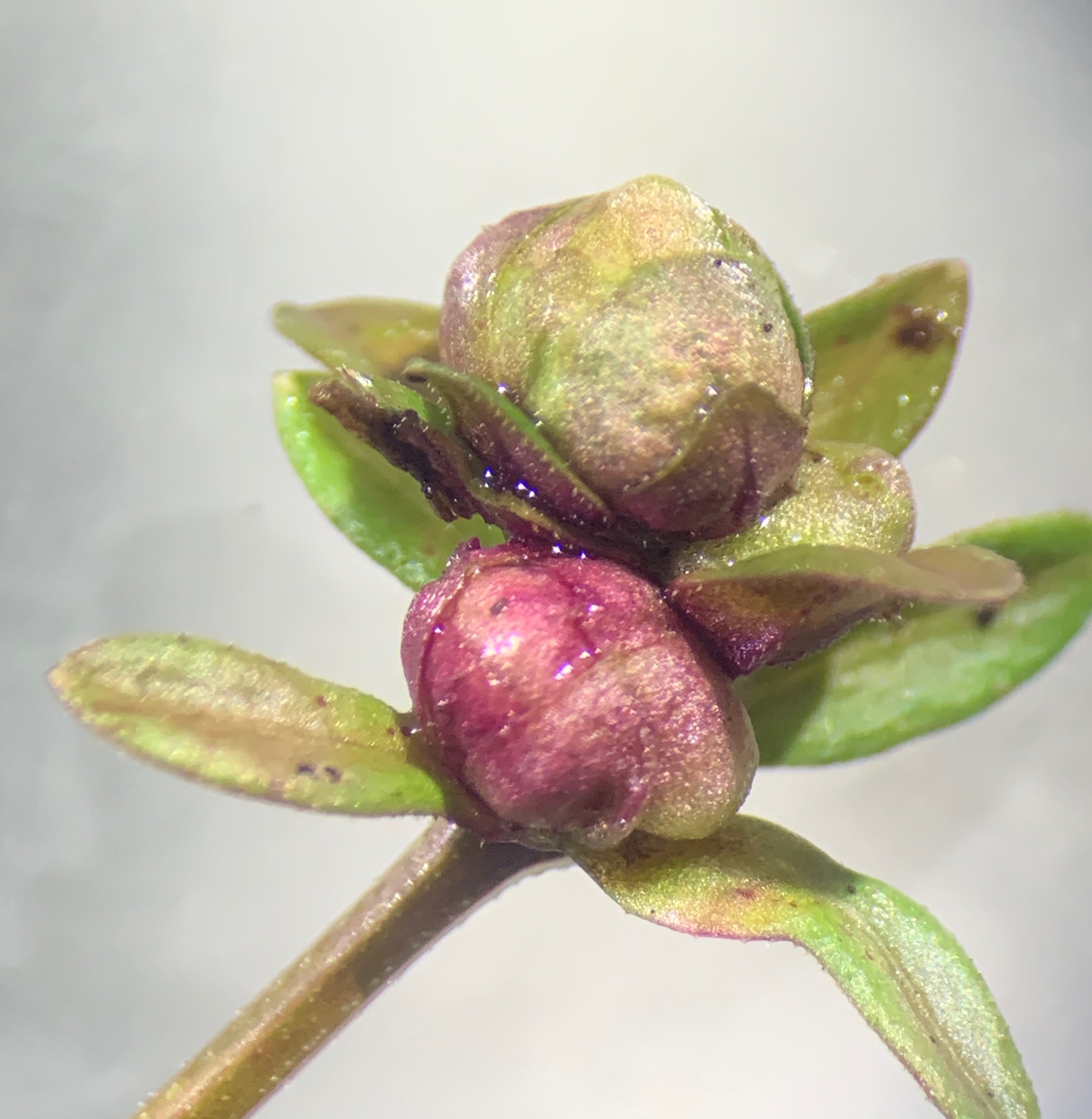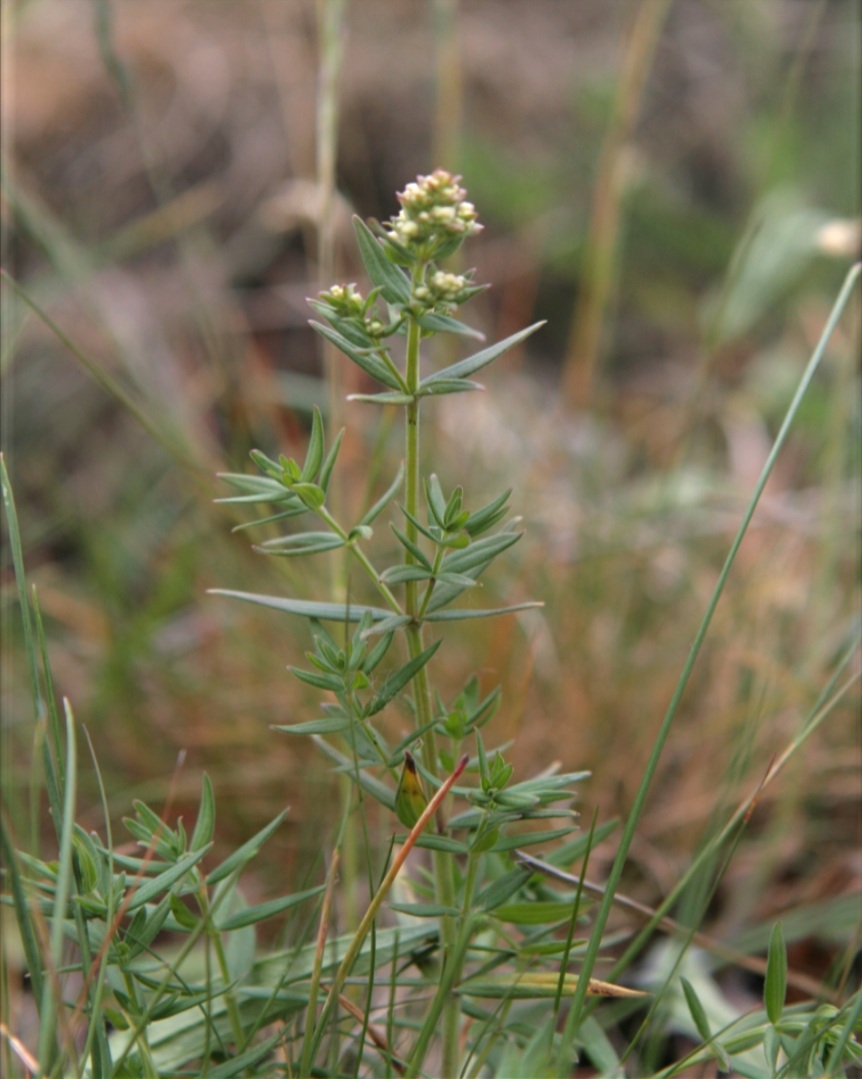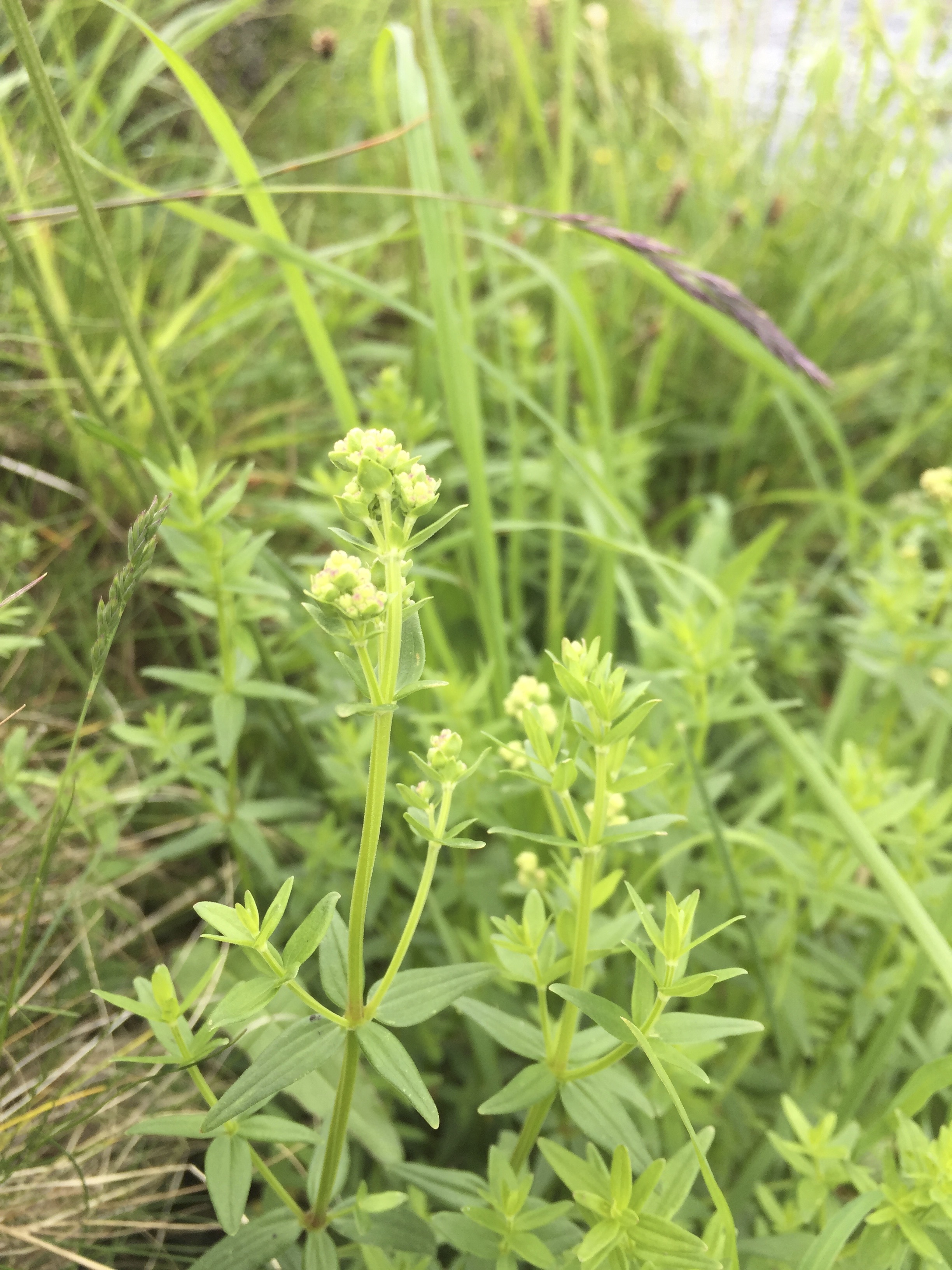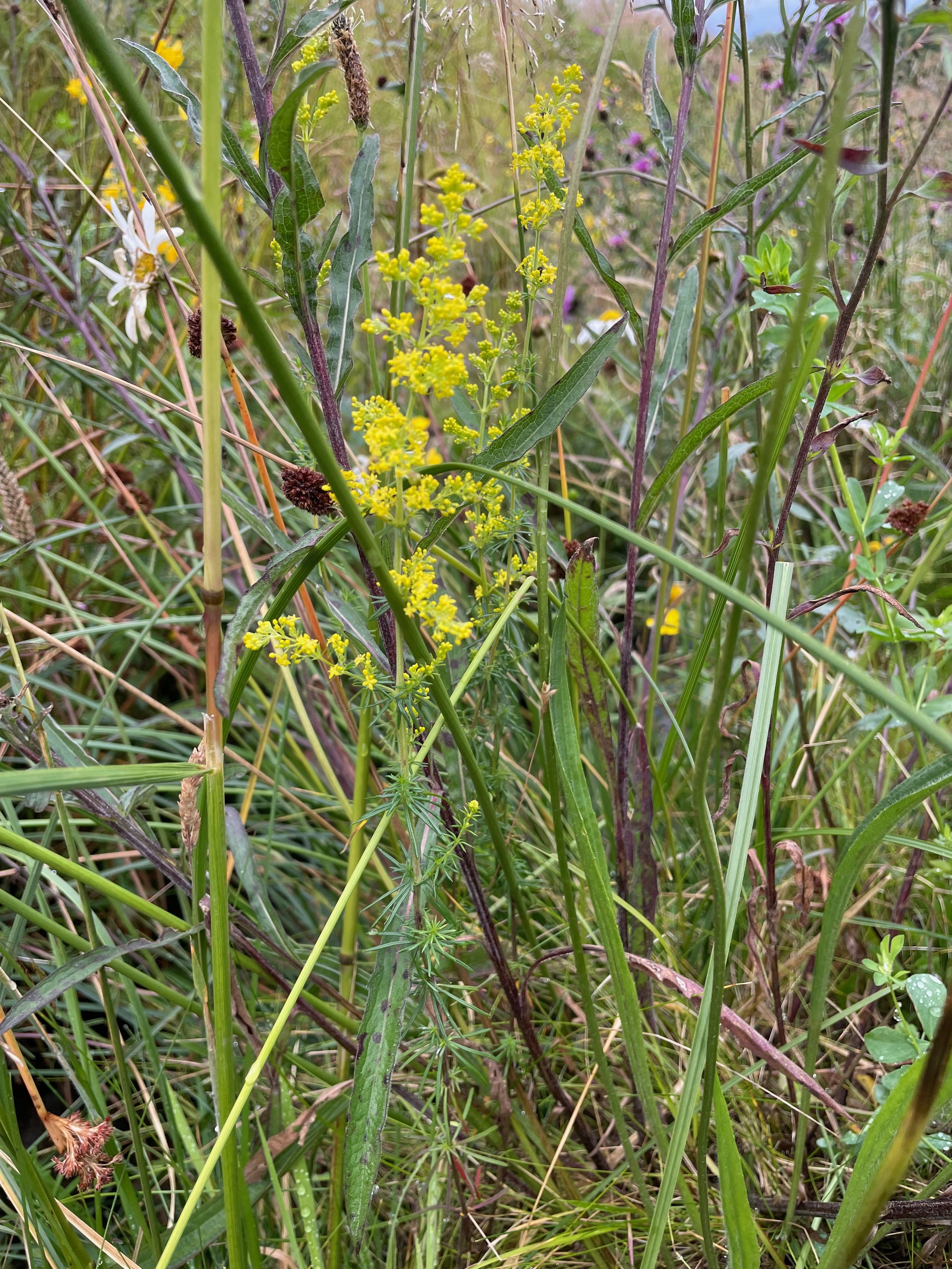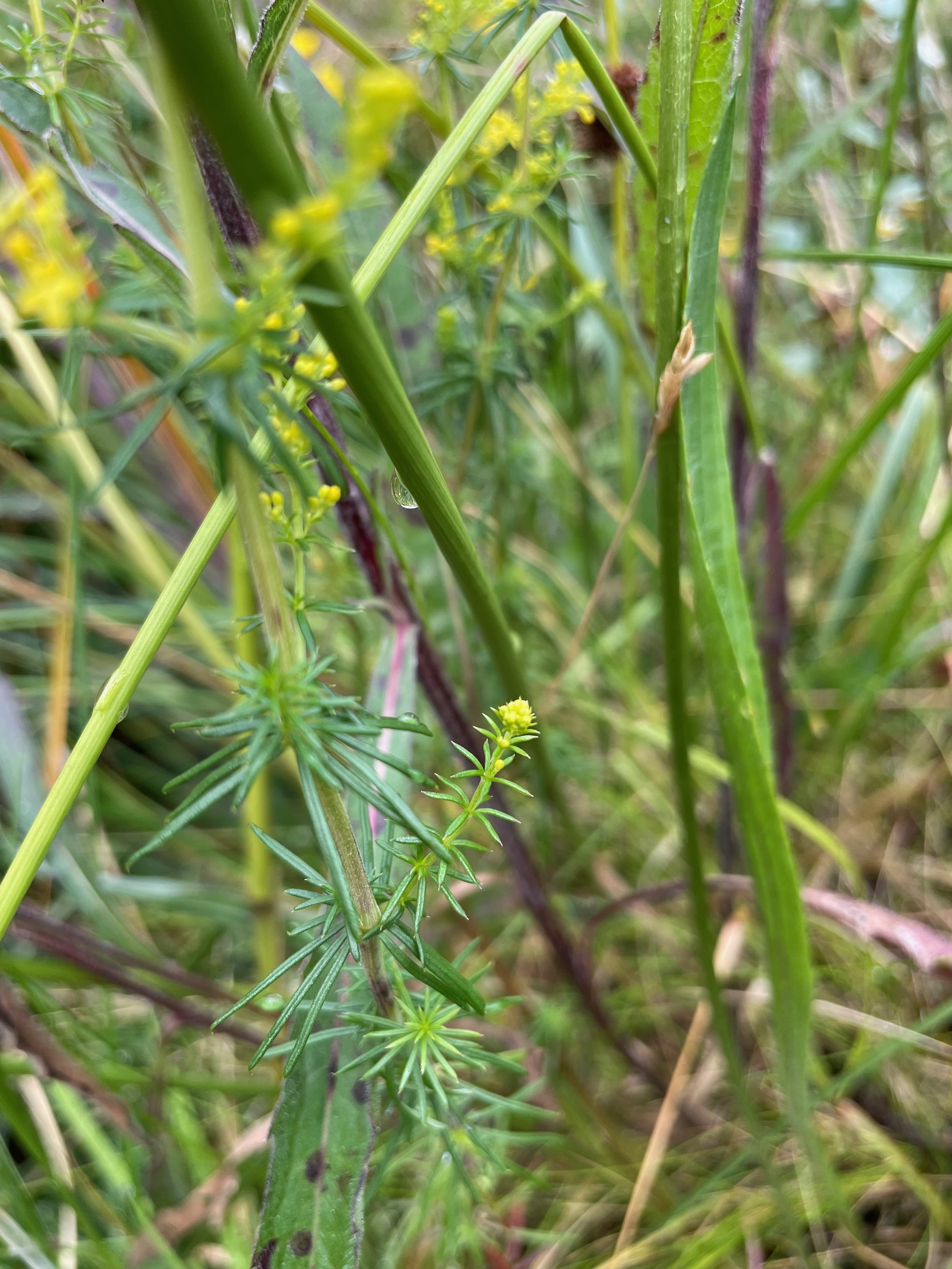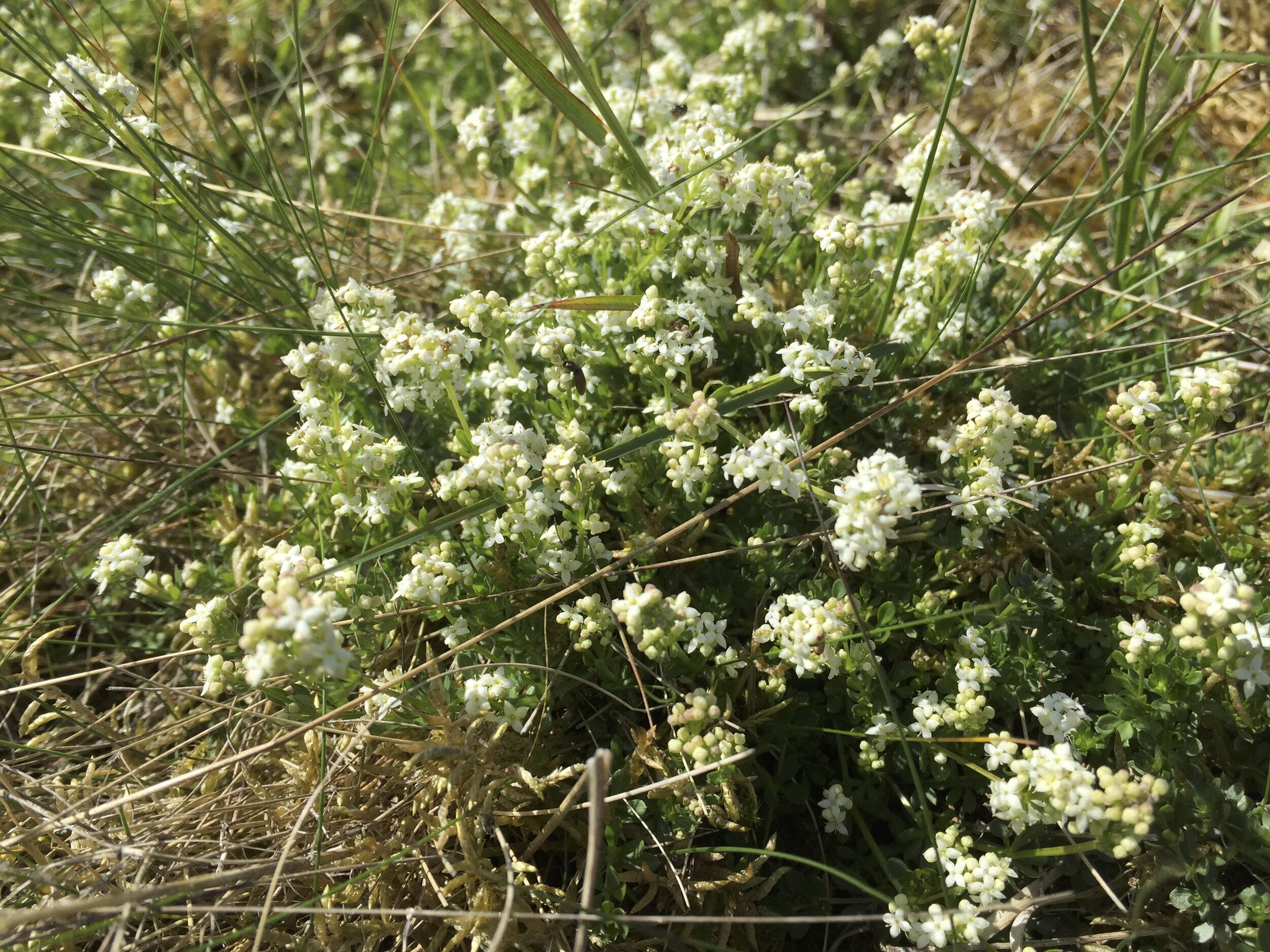Galium species - Bedstraws
Galium, Bedstraws all have a circle of leaves (whorl) arising from the stem. The flowers are small, four-petalled and are not stalked (sessile). The fruits are a pair of nutlets. Most are perennials except the commonest one Cleavers, G. aparine which is an annual.
The important features to identify them are the type of hairs (hooked or not and direction) and the tips of the leaves (rounded or with a small point projecting, mucronate).
Galium aparine - Cleavers, Goosegrass or Sticky Willie
The commonest and most familiar member of the family.
Galium album - Hedge Bedstraw
This is a more robust plant than G. palustre. The leaves are 5 -8 per whorl with a small to obvious point at the tip (mucronate). Similarly the flowers lobes also end in a short point. The stem is smooth. It was previously named G. mollugo. It is sometimes included in seed-mixes.
Galium odoratum - Woodruff
This is a large bedstraws, both the leaves and flowers. It has a lovely scent and is a marker of an ancient woodland, so is often in botanically interesting areas.
Galium palustre - Marsh-bedstraw
The stem can be smooth or more usually rough, the leaves never have a mucronate tip.
There are 4 -6 leaves usually per whorl with one vein.
Galium uliginosum - Fen Bedstraw
This is like a weaker, more slender, scrambling form of G. palustre, which grows in base-rich marshes or fens.
Galium boreale - Northern Bedstraw
The leaves in whorls of 4 leaves, with 3 prominent veins. Usually hairless, but in the mountains often downy on stems and leaves. Fruits have hooked bristles.
Galium saxatile - Heath Bedstraw

